by Alexander A. Elias
Alexander Elias writes about his 3-day hike to Mt. Iglit-Baco National Park in Calintaan, Occidental Mindoro last April 2015. As a biologist and birdwatcher, he makes keen observations about the birds, wildlife, and disturbing conditions of the forest at the park. Information on planing a trip to Mt. Iglit-Baco National Park can be found at the end of the article.
I had heard and read about the Mt. Iglit – Baco National Park for several years. It sounded intriguing but difficult to realize. The sight of wild roaming Tamaraw in a high mountain range felt very appealing and interesting. As a biologist with general interest in Philippine nature and with special interests in birds and eco systems, a trip to this park seemed to be a possible enriching experience.
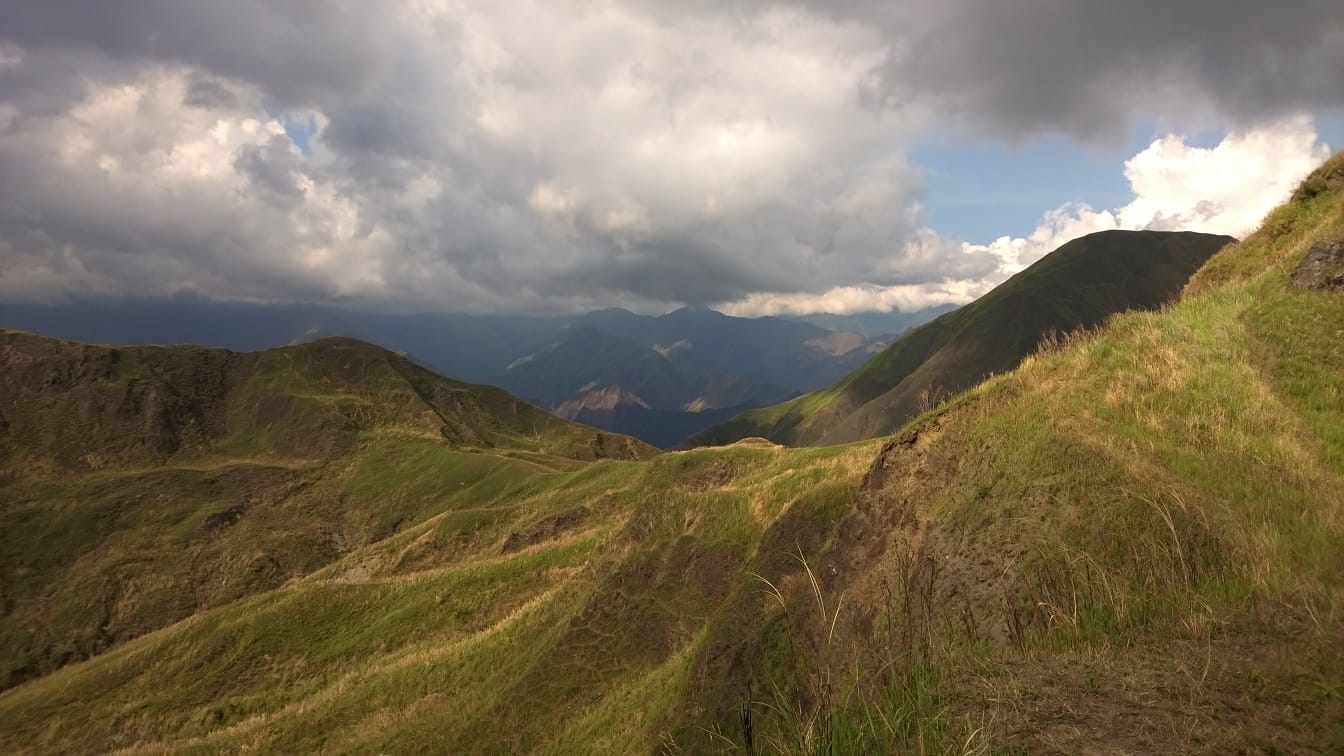
I decided to visit Occidental Mindoro and the Sablayan area this dry season. Having been to this area 7 years ago visiting only Pandan Island, I remembered seeing primary forests along the road in Sablayan. A rarity in the Philippines. Pandan island revisited was a positive surprise. But that is another story.
We were not planning at all to visit the park, but our plans changed when we found out at the resort that they organize guidded trips to that park and that it appeared there are several stations with basic overnight facilities. Quite pricey though. Having more participants will lower the price, but there were only the 2 of us. Afterwards, this seemed to be a blessing. The resort organizes all food and has their own, very kind and helpful, assistant who goes along with the hike and who is doing all cooking etc.
Day 1
The day started very early. We left the resort in Sablayan at 4 am to reach the barangay from where we needed to start the hike around 6am. The trip took us from Sablayan town to a barangay in Calintaan town ( itself being formerly a barangay of Sablayan ) which is said to be nearer San Jose than to Sablayan. Large tracks of the road were rough and in bad condition. Anywhere in Occidental Mindoro one can see roads being threatened by rivers as these rivers originate in totally cleared high mountains. When the rains fall, loads of stones are carried down by torrential currents. It is passable though during the dry season. And the dry season is really dry in Occidental Mindoro where many parts are almost desert like because of the severe deforestation and repeated burning of pastures and hills going on for many decades combined with the climate which supports a long and often intense dry season.
At the barrio we had to meet the barangay Capitan and let him know about our plans. Which was to trek the park for 3 days and 2 nights. The Capitan was a very kind and knowledgeable man. It was there where we met our 2 guides. So we were a party of 5, with only 2 of us the visitors.
The road stops at the barrio. So the hike starts there. First a few kilometers through a landscape of parched rice fields and small greener meadows alternate with some patches of secondary forest and lone trees. Some of the more ordinary birds could be seen. Balicassiao, Black-naped Oriole, Spotted Dove, Yellow-vented Bulbul, Large-billed Crow, Brown Shrike, White Breasted Waterhen, Glossy Swiftlet.
We arrived at the entrance of the Park where we had to register. It is a well shaded place with a small office and some camps with big acacia and mahogany trees. It is surrounded by some secondary forest. Along a river on the other side, there is a settlement of the Mangyan. This camp is around 80 meters above sea level, the barrio at 50 meters.

While resting, we could hear a very loud call nearby: the White Bellied Woodpecker. My hair stood straight up. I only saw this bird once in Rajah Sikatuna ( Bohol ) and after hours of patience. There they were, very low to the ground, three of them. Two males and one female. Very easy to see and close. They took their time playing around and didn’t mind us much. It was a real treat. We watched them for as long as we could.
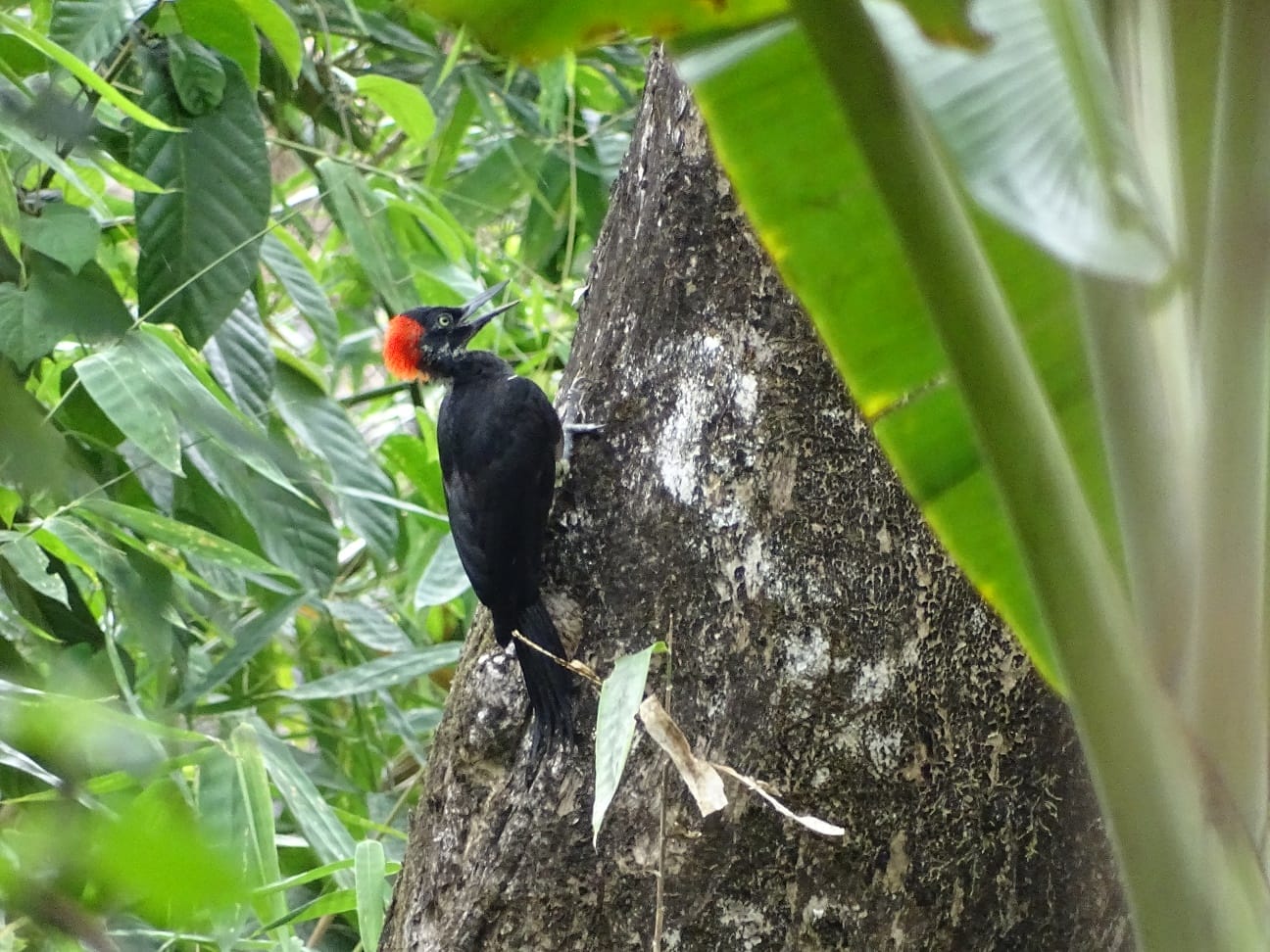
We had to go, the hike was still going to last for many hours. The first stretch would be to reach camp 2. Situated on around 450 meters above sea level at the foot of the tamaraw area. Actually we kind of expected a hike through cool forested areas protected by the government against degradation. This is a national park after all. It was not to be like that. The hike was a quite exhausting and took around 4 to 5 hours through an otherwise interesting landscape of stony rivers, gorges, karst hills and with some beautiful primary forest patches in the distance. But otherwise it was devastated. Forests burning. Hundreds of hectares ruined only in the past decade. All cut and burned within the so called national park. Our guides were clearly emotional when they told us that certain areas were still totally forested 2 years ago. And the patches which remained as well as some very big lone trees were the evidence of a once very mighty forest with absolutely huge and adorable trees. We came across a Zitting Cisticola, some groups of Mindoro Bulbul, Philippine Coucal mindorensis ( which is all black ), more Balicassiao, Common Emerald Doves, Bar-bellied Cuckoo Shrike ( the one in Mindoro has no barred belly, it is the striata race ), Colasisi ( the call is really different than from the Luzon ones. It is very soft. Moreover the color of the beak seems lighter ), Coleto ( also a very different call from the Luzon ones. It hardly sings, just some monotonous calls ), White-throated Kingfisher, Philippine Serpent Eagle, Pygmy Flowerpeckers, Arctic Warbler, Grey Wagtail, Slender-billed Crow, Elegant Tit, Blue-throated Bee-eaters, Plain Bush Hen. Not long before reaching the camp we passed a real large patch of primary forests. Of course on a steep hill. Mysterious sounds came from it resembling the Mindoro Imperial Pigeon and or the Pink Bellied Imperial Pigeon. But we couldn’t see anything. According to the local people who seem to know something about birds, the Mindoro Imperial Pigeon isn’t really confined to higher altitudes. It may prefer it, but comes down regularly.
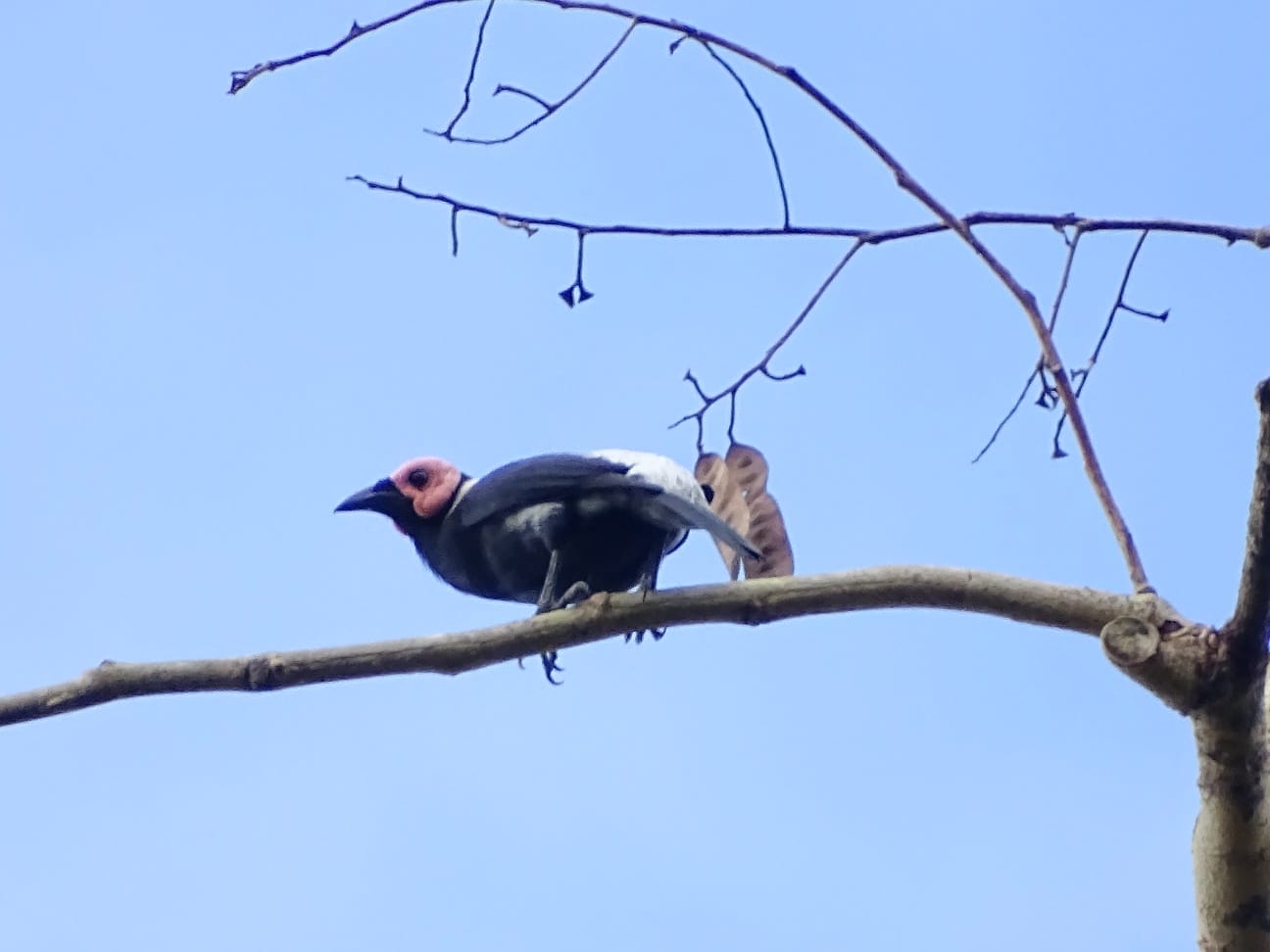
Finally we arrived in camp 2 for our lunch stop and rest. The camp is like an oasis in a desert as all the surrounding forests are burned down. Ironically the camp has a huge placate where all the rules of the Park are written. Among them very clear that it is strictly forbidden to burn down anything and especially forests within the park. There is however a narrow and long patch of forest which connects the camp with a larger one of probable many tens of hectares. In the forest near the camp we got our next treat. The Mindoro hornbill. Again we could observe this one very well and for quite a while. It was eating lansai ( a kind of ficus strangler ) berries quite close to the ground.
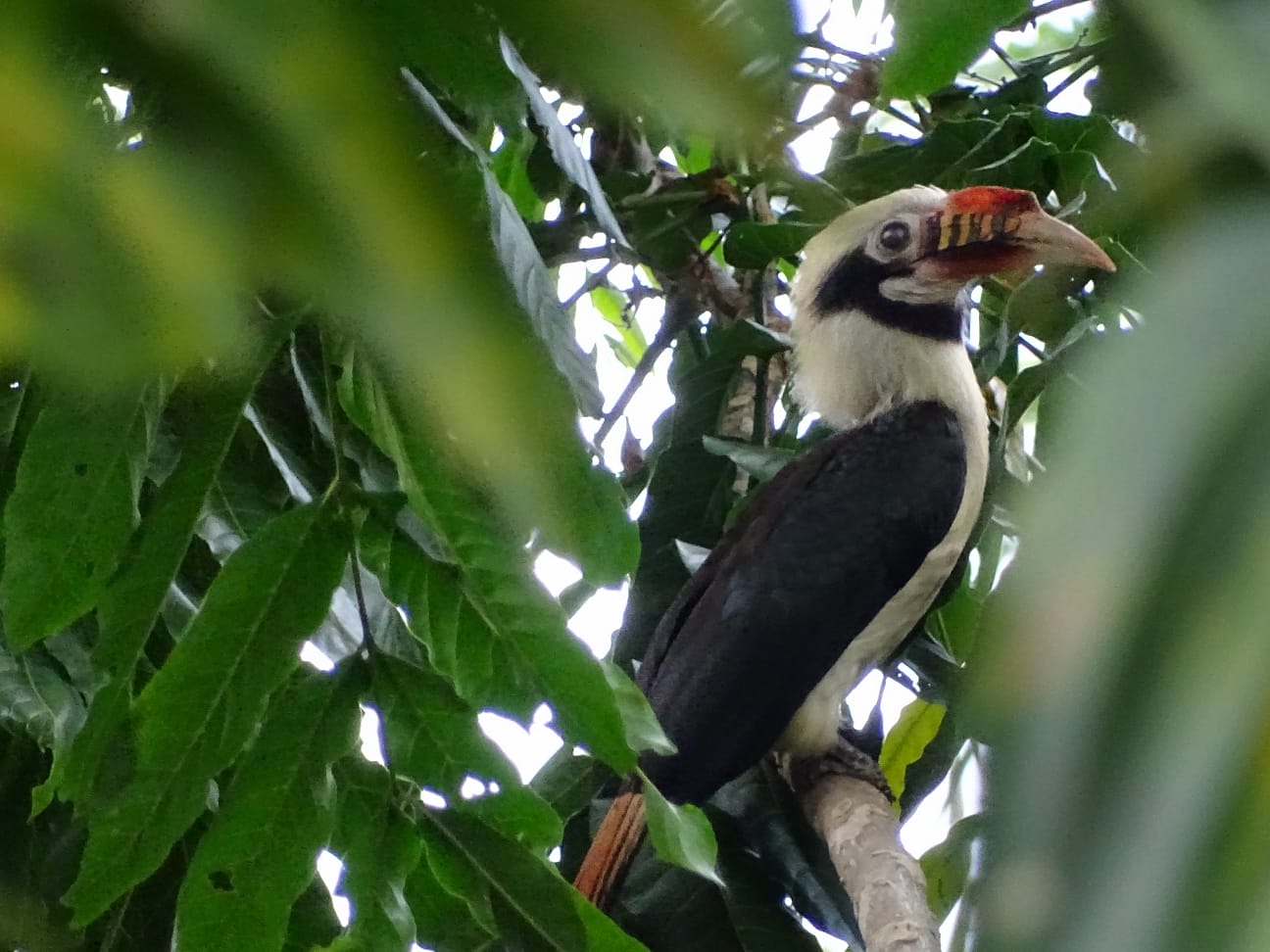
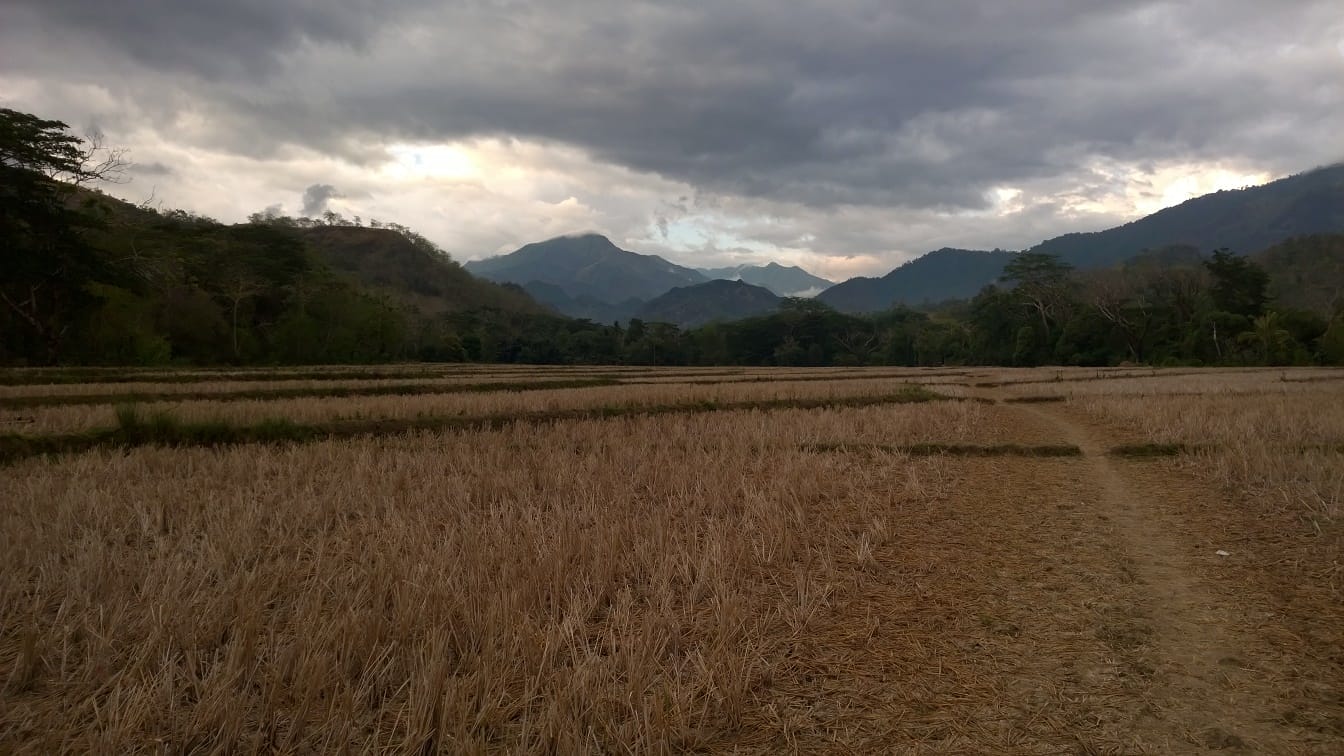

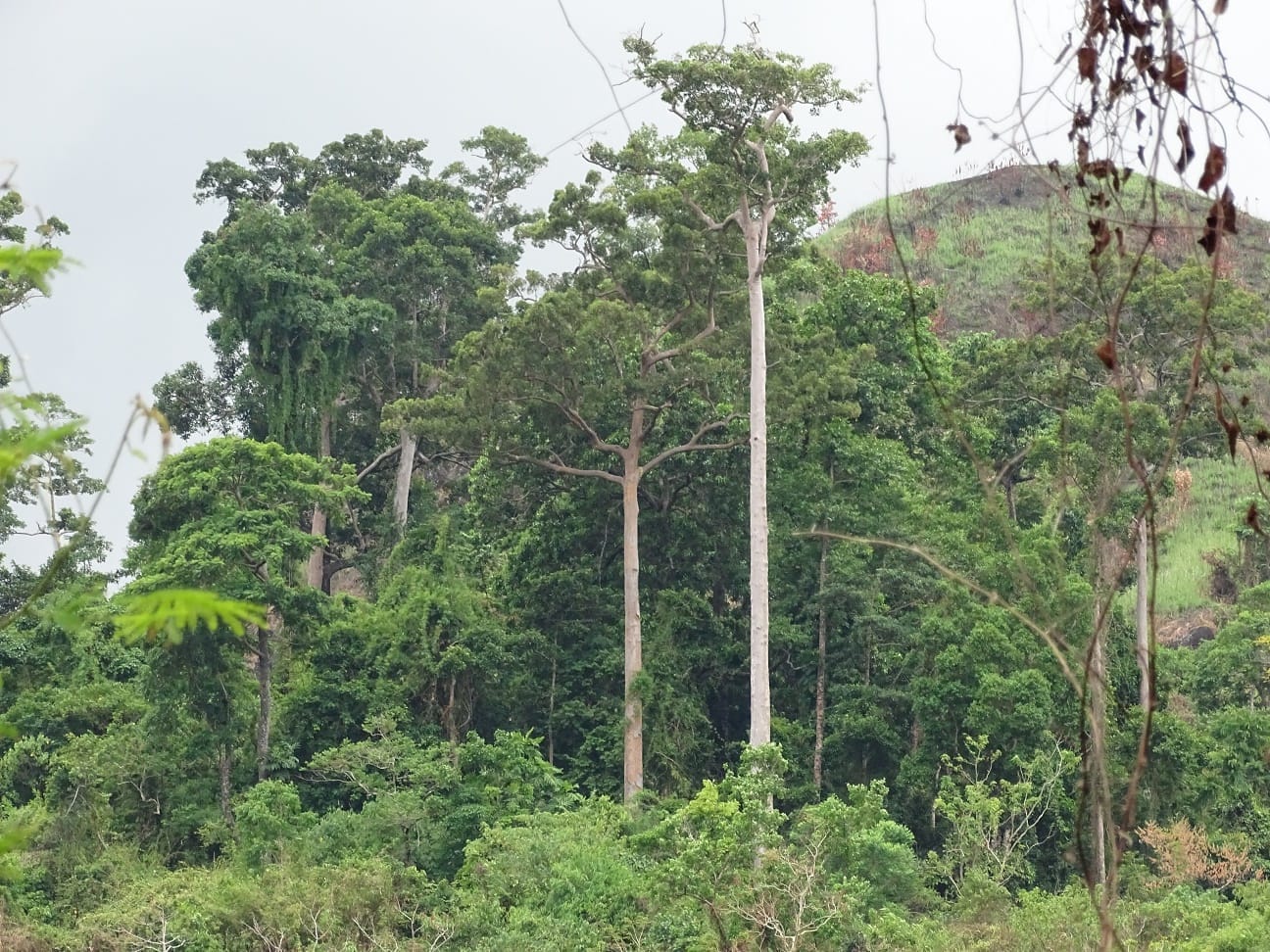
Day 2
Soon after leaving Camp 2 the landscape radically changed into an almost alpine one with grassy slopes and bald grassy high mountains peaking everywhere around us. One of them Mount Iglit. Some forests here and there and in some mountain gorges remnants of the once abundant Mindoro Pine forests. We were surprised to see that even this far into the park there is a sizable settlement of Mangyans and forest destruction. In some trees left standing we bumped into another lifer, the Pompadour Green Pigeon. Incredibly beautiful, especially the male. We couldn’t get to observe them for too long, they went along. But also there at least four White-bellied Woodpeckers, easy to observe, knocking on the dying trees. There were also Reddish Cuckoo Doves, a Grey-streaked Fycatcher, White Breasted Wood Swallows.

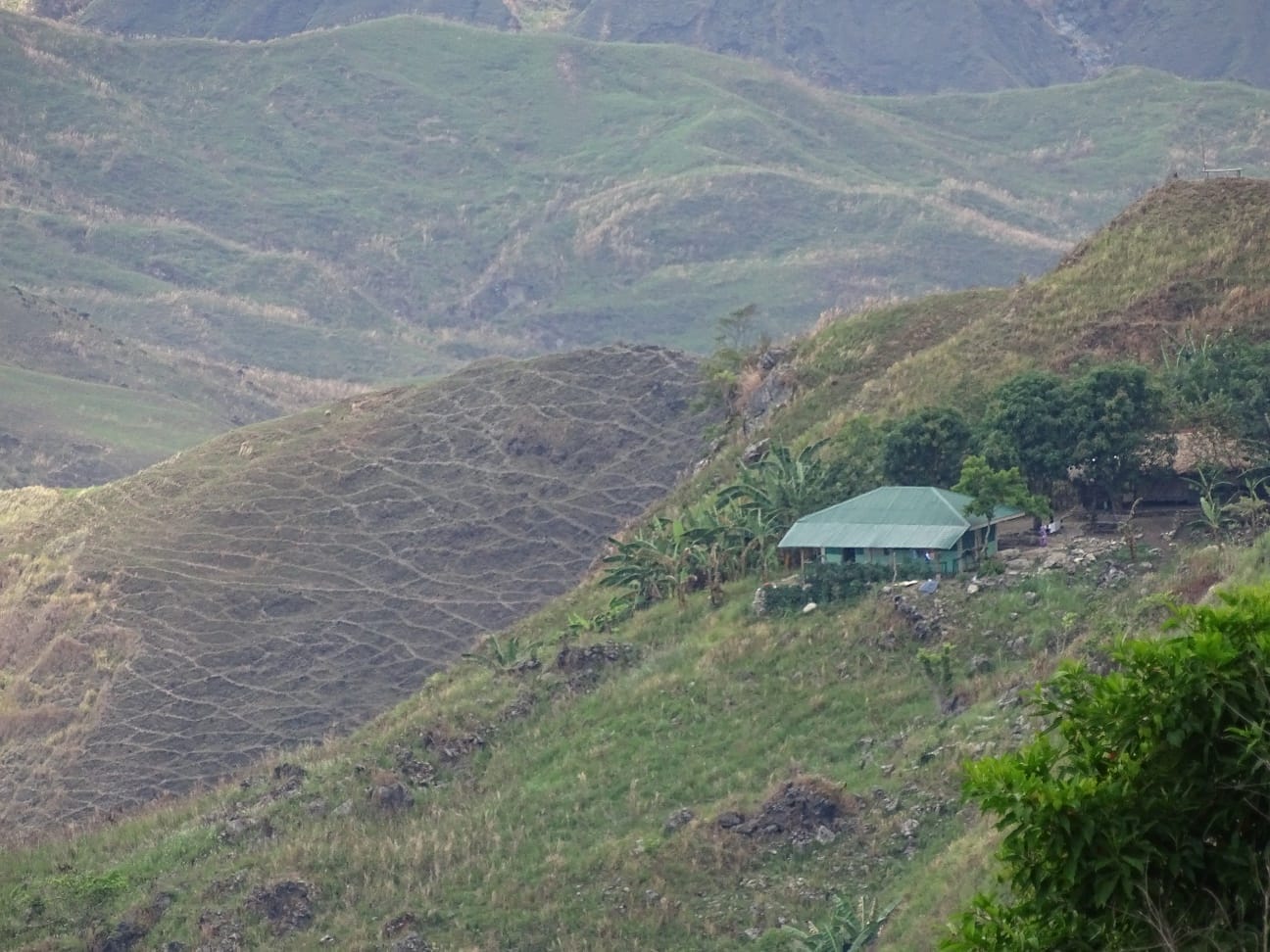
Camp 3 is a very idyllic place. Set on a steep slope on 850 meters above sea level. With magnificent views on many peaks and mountains from small to impressive alternated with deep slopes and gorges. It was already late afternoon when we arrived. Some secondary forest patches nearby and a larger recuperating forest about half an hour hike away. Very cool of course, especially at night. Sleeping and other facilities basic but good enough. No electricity of course and hardly a cellular signal of any kind. We were lucky to see some tamaraw that same afternoon right after arriving at the camp. And we were treated on the scary call of the larger type of deer which roams the area. Both a thrilling experience. In the late afternoon going towards the evening the air was filled with the calls from afar of the White-eared Brown Dove, Reddish Cuckoo Dove, Philippine Coucal, Common Koel, Brush Cuckoo and Plaintive Cuckoo. Near the camp we could enjoy the singing of the Pied Fantail, Tawny Grassbird and Bright-capped Cisticola and the noisy Plain Bush Hen. In the evenings the only birds we could only hear was the Philippine Nightjar and sometimes the Common Koel.

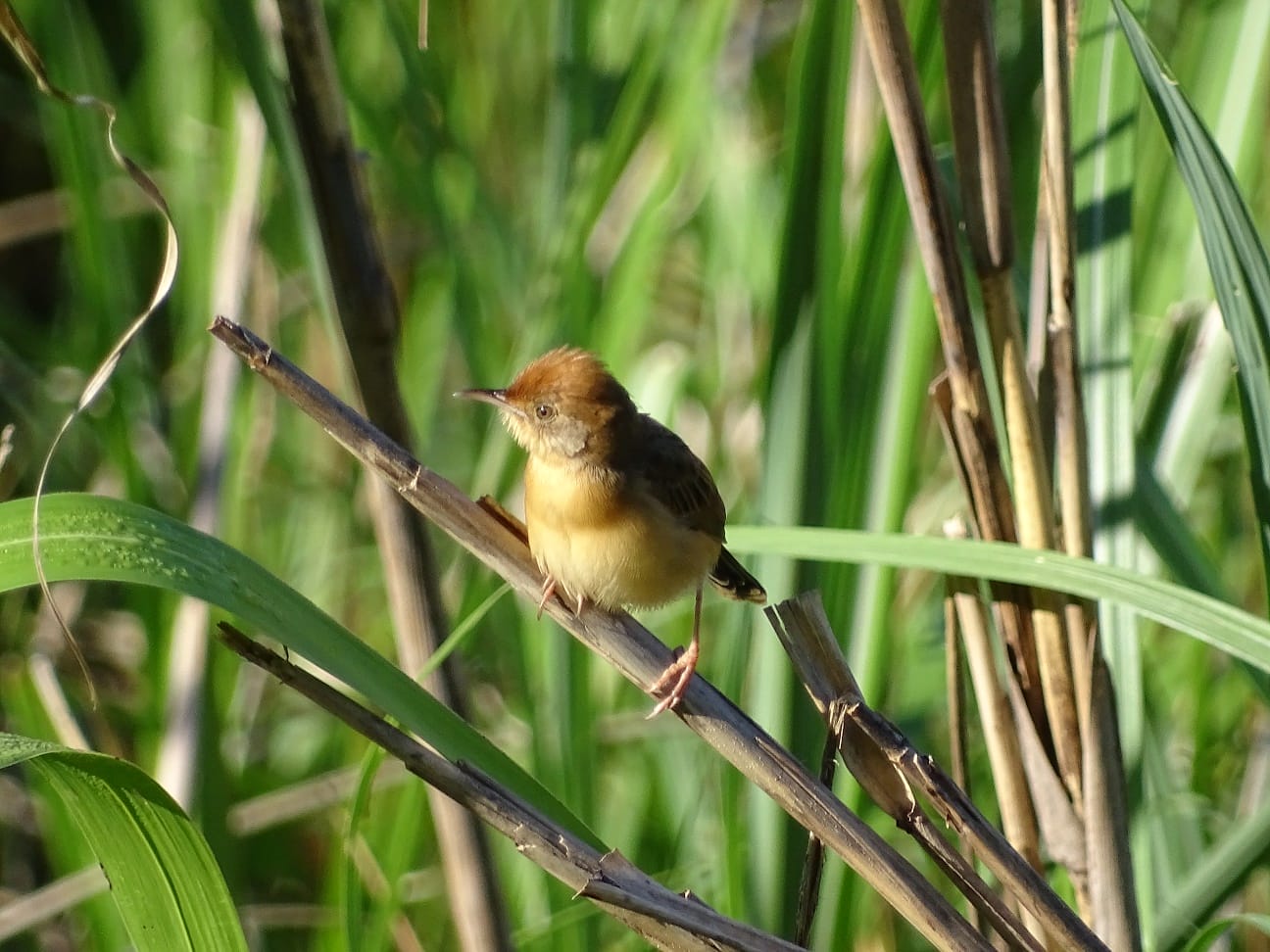
Day 3
The next day we went prospecting the nearby forest. But it appeared heavily disturbed and very hard to hike through as the paths were completely overgrown. Almost no birds seen. There were some calls we couldn’t place, probably of imperial pigeons. We could however see a wild pig fleeing and we bumped into two big deer and a few tamaraw when leaving the forest. On the hike back in the grasslands we could see a Changeable Hawk Eagle and Crested Serpent Eagle.
Once there, one is tempted to extend his stay. It is quite hard to get there so you’ll not easily go back another time. And the area is unique, very cool and relaxing. Although not a bird Valhalla, it is still interesting because of the Mindoro endemics and quite a few less common birds. While roaming around the camp we could very well observe the Oriental Honey Buzzard, bumped into a Blue Breasted Quail, heard several Red Jungle Fowl, saw a Blue Rock Thush on the rocks, a Lesser Coucal, a Colasisi, quite a lot of Yellow vented bulbul and Mindoro bulbul, Black-naped Oriole, several Mountain Shrikes, Barn Swallows. We left camp 3 together with our resort guide and the two park rangers with a feeling of sadness. How tempting to stay there for much longer!

Our guides separated from us in camp 2. But we weren’t in any way bored. In camp 2 we could finally see the anticipated Scarlet-collared Flowerpecker, a Mindoro endemic. There were again Mindoro Hornbills and White-bellied Woodpeckers. A Mangrove Blue Flycatcher. A few Coleto and some Crested Serpent Eagles. On our hike back to Camp 1 we bumped into an Oriental Cuckoo. There were six birds still high on our agenda. Two of those were parrots. Not too far from camp 2 going back and near the large intact primary forest we got to see several Blue Crowned or Mindoro Racket tail parrots. A beautiful experience. Noisy and flying very fast. Once they disappear in a tree, even though you see which one, they are really hard to find because of their color. We observed them for over an hour until our necks were stiff. They didn’t leave the area until then and they flew back into the primary forest. Again we saw White-bellied Wood peckers and Bar-bellied Cuckoo Shrikes. And three Coppersmith Barbets.

Exhausted but very much satisfied and thrilled we got back to our car in the barrio.
Unfortunately if the current situation goes on, one must hurry to see this so called park. The remaining forest patches, also an important hide out for the tamaraw, the two species of deer and the wild boar and more so for all those forest birds, are disappearing so fast that each and every year counts. The park rangers are only 18 for an area of 75,000 hectares covering several municipalities and two provinces. Their mandate is actually only to prevent hunters to finish off the last remaining wildlife. Not to protect the forest, even though these two are directly inter-connected. The rangers have no guns, they get a salary of peso 8,000 only. While trekking to the park they need to pay for all the food themselves. They do not even get Philhealth and SSS. But they work there for over 10 years. In other words, the government seems not to care less about the state of that park. The worst is to allow settlers within the boundaries of the park. In this case the Mangyans. Friendly, shy and soft hearted people, but utterly destructive for nature. It is actually the most nature destructive tribe I have ever experienced. Instead of fighting for forest conservation like the tribes in South America, they are the ones burning them down everywhere and in much larger areas than what they actually need to for their slash and burn activities. The park rangers told us that the DENR ( Department of Environment and Natural Resources ) indeed asked them to rotate the land they use. So that the remaining forests are spared. However they do not listen and carry on with impunity. Once, only a hundred years ago, Mindoro was for 80% covered with forests of astonishing beauty and wealth. Now around 10% or less seems to be left. If one hikes through those magnificent high mountains completely covered with grasses, one might think they are naturally so. But they aren’t. In certain areas on the slopes which could not be reached by the fires set by the Mangyans, one can find hidden pine or other forests. And before they were definitely not confined to those hidden and hard to reach areas where they are protected from raging fires.

Ms. Irene Obias, Mr. Gustav Grabler
Gustav’s Place Beach Resort
Sto. Nino Sablayan 5104
Occidental Mindoro – Philippines
Tel.: 0063 (0) 9394326131, 0063 (0) 9394326134
E-mail:office(at)gustavs-place.com

Fascinating to read about this place although rather tragic to hear that so little is being done to protect it. Perhaps education can help to stem the tide?
It is a long discussion which is regularly heating up between the members of the wild bird club of the philippines and other environment conscious citizens / residents of the Philippines. The people who destroy the Park in this case are often not even educated on an elementary level. The forest guards and others do try to explain the issues. But to no avail. At a certain moment someone needs to be strict and just evacuate the premises of the Park and protect it the way it should be done. That seems to be the only way. Of course the people which will have to be removed should be given an alternative livelyhood as well as housing etc. But obviously they will have to change their way of life which they appear not want to do.
Good afternoon Alexander. We would like to request your permission to use your Mindoro Hornbill photo in this post for a factsheet we are printing for our communities in Mindoro. If this is possible, please do email us at communication (at) haribon (dot) org (dot) ph. Thank you so much for your time, and please keep up the good work.
Hi Alexander! I’m writing an article about Mindoro. May I seek your permission to use your photos of Mt
Iglit? Thank you.